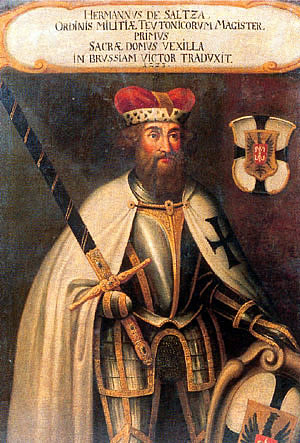|
Schiffskinder
Schiffskinder (literally meaning ship-children in German), were the crews of the ships of the Hanseatic League during the late Middle Ages. Schiffskinder and passengers swore allegiance to each other before leaving the harbour. They often fought both on land and at the sea. Sometimes groups of Schiffskinder supported the Teutonic Order armies and there is a record of one Hochmeister The Grand Master of the Teutonic Order (german: Hochmeister des Deutschen Ordens; la, Magister generalis Ordo Teutonicus) is the supreme head of the Teutonic Order. It is equivalent to the grand master of other military orders and the supe ... who in 1414 awarded one such group, the Schiffskinder of Gdańsk (Danzig), with privileges for their valor in combat against the Poles. References Hanseatic League {{Germany-hist-stub ... [...More Info...] [...Related Items...] OR: [Wikipedia] [Google] [Baidu] |
Hanseatic League
The Hanseatic League (; gml, Hanse, , ; german: label= Modern German, Deutsche Hanse) was a medieval commercial and defensive confederation of merchant guilds and market towns in Central and Northern Europe. Growing from a few North German towns in the late 12th century, the League ultimately encompassed nearly 200 settlements across seven modern-day countries; at its height between the 13th and 15th centuries, it stretched from the Netherlands in the west to Russia in the east, and from Estonia in the north to Kraków, Poland in the south. The League originated from various loose associations of German traders and towns formed to advance mutual commercial interests, such as protection against piracy and banditry. These arrangements gradually coalesced into the Hanseatic League, whose traders enjoyed duty-free treatment, protection, and diplomatic privileges in affiliated communities and their trade routes. Hanseatic Cities gradually developed a common legal system gov ... [...More Info...] [...Related Items...] OR: [Wikipedia] [Google] [Baidu] |
Teutonic Order
The Order of Brothers of the German House of Saint Mary in Jerusalem, commonly known as the Teutonic Order, is a Catholic religious institution founded as a military society in Acre, Kingdom of Jerusalem. It was formed to aid Christians on their pilgrimages to the Holy Land and to establish hospitals. Its members have commonly been known as the Teutonic Knights, having a small voluntary and mercenary military membership, serving as a crusading military order for the protection of Christians in the Holy Land and the Baltics during the Middle Ages. Purely religious since 1810, the Teutonic Order still confers limited honorary knighthoods. The Bailiwick of Utrecht of the Teutonic Order, a Protestant chivalric order, is descended from the same medieval military order and also continues to award knighthoods and perform charitable work. Name The name of the Order of Brothers of the German House of Saint Mary in Jerusalem is in german: Orden der Brüder vom Deutschen Haus de ... [...More Info...] [...Related Items...] OR: [Wikipedia] [Google] [Baidu] |
Hochmeister
The Grand Master of the Teutonic Order (german: Hochmeister des Deutschen Ordens; la, Magister generalis Ordo Teutonicus) is the supreme head of the Teutonic Order. It is equivalent to the grand master of other military orders and the superior general in non-military Roman Catholic religious orders. ''Hochmeister'', literally "high master", is only used in reference to the Teutonic Order, as ''Großmeister'' ("grand master") is used in German to refer to the leaders of other orders of knighthood. An early version of the full title in Latin was ''Magister Hospitalis Sanctae Mariae Alemannorum Hierosolymitani''. Since 1216, the full title ''Magister Hospitalis Domus Sanctae Mariae Teutonicorum Hierosolymitani'' ("Master of the Hospital House of the Blessed Virgin Mary of the Germans of Jerusalem") was used. The offices of ''Hochmeister'' and ''Deutschmeister'' (''Magister Germaniae'') were united in 1525. The title of ''Magister Germaniae'' had been introduced in 1219 as t ... [...More Info...] [...Related Items...] OR: [Wikipedia] [Google] [Baidu] |
Gdańsk
Gdańsk ( , also ; ; csb, Gduńsk;Stefan Ramułt, ''Słownik języka pomorskiego, czyli kaszubskiego'', Kraków 1893, Gdańsk 2003, ISBN 83-87408-64-6. , Johann Georg Theodor Grässe, ''Orbis latinus oder Verzeichniss der lateinischen Benennungen der bekanntesten Städte etc., Meere, Seen, Berge und Flüsse in allen Theilen der Erde nebst einem deutsch-lateinischen Register derselben''. T. Ein Supplement zu jedem lateinischen und geographischen Wörterbuche. Dresden: G. Schönfeld’s Buchhandlung (C. A. Werner), 1861, p. 71, 237.); Stefan Ramułt, ''Słownik języka pomorskiego, czyli kaszubskiego'', Kraków 1893, Gdańsk 2003, ISBN 83-87408-64-6. * , )Johann Georg Theodor Grässe, ''Orbis latinus oder Verzeichniss der lateinischen Benennungen der bekanntesten Städte etc., Meere, Seen, Berge und Flüsse in allen Theilen der Erde nebst einem deutsch-lateinischen Register derselben''. T. Ein Supplement zu jedem lateinischen und geographischen Wörterbuche. Dresden: G. Schönf ... [...More Info...] [...Related Items...] OR: [Wikipedia] [Google] [Baidu] |


.jpeg/1200px-Brama_Zuraw_W_Gdansku_(153003103).jpeg)